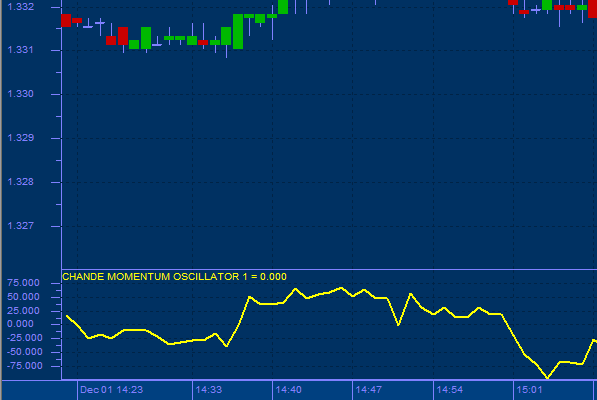
The Chande’s Momentum Oscillator function determines the momentum of price data by comparing the size of recent negative price changes to the size of recent positive price changes.
This function determines the momentum of price data by comparing the size of negative price changes to the size of positive price changes. The value resultant value is normalized from -100 to 100 where negative values indicate larger negative cumulative price changes and positive values indicate larger positive cumulative price changes.
There are two different ways that this oscillator is used as a trading signal. The first is to measure overbought (greater than 50%) or oversold (less than -50%) levels for a given instrument. The second method is to buy when the oscillator crosses above its moving average line and to sell when the oscillator crosses below its moving average line.
Usage:
Momentum indicators are useful for determining trends in data. This indicator can be used as an overbought/oversold Indicator. As a general rule, a instrument is considered to be overbought if this indicator is greater than 50 and oversold if this indicator is less than 50. It can also be used to determine the degree to which an instrument is trending.

